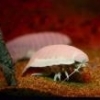-
Topics
-
Latest Update
-
0
WTS Many Items! Lelong Sale
Please WhatsApp me at 9173two940 Deal in the East Ecotech MP10 QD - $250 each - 2 sets Good condition - Used for 4 months and kept Maxspect Gyre XF-350 - 1 pair with controller - CN Set - $300 Very good condition - Used for 1 month, washed and kept Fauna Marin Dino X - 250ml - $25 Full - Unopened Copper Power - 4 ounce - $15 Full - Unopened NeoPhos - 500ml - $15 Full - Unopened Red Slime Remover - 20g - $20 Full - Unopened Blue Life Rapid Fish Quarantine Dip - 10 pouches - $20 for all Orcalabs Phospha-Guard BIO-Cubes - 1000ml - $50 Full - Unopened Orcalabs Nitra-Guard BIO-Cubes - 1000ml - $10 Half used Ecotech RMS Mounting Bracket (Slide) for XR30 size - $20 for 2 pieces Some minor cosmetic scratches Tropic Marin Elimi-Phos Rapid - 500ml - $30 Full - Unopened Orcalabs Kalk Plus - 500g - $20 for 2 pieces Full - Unopened Brightwell SpongExcel - 4 oz - $15 Full - Unopened Popbloom 30W Refugium Light with Stand and Remote - $30 Barely used Hailea HK500A Chiller - 1 Set - $250 Good condition - Flushed Brightwell NeoNitro - 500ml - $10 Full - Unopened AquaForest Life Bio Fil - 5000ml - $60 Full - Unopened Fauna Marin Skim Breeze Reactor 1L - $40 Barely used Aqua Illumination Orbit 2 - $290 Brand new, threw away box but never used SeaTorch MS3500 Magnetic Stirrer - $30 Abit of rust residue on the plate but otherwise fully working and rarely used Neptune Apex FS-50 Flow Meter - $35 No packaging but never used before BRS Co2 Scrubber - $15 Good condition Dazs Auto Feeder - $10 Brand new Seneye Reef with Web Server - $50 Used for a year and kept. No slides. Hanna pHep+ pH Tester - $50 Rarely used - Comes with calibration fluids Hanna Salinity Tester - $80 Rarely used - Comes with calibration fluids -
3
-
0
Wts GIANT Green Morray Eel
Hi selling this beautiful piece due to moving house soon pm me if keen thanks -
0
WTS beginner SPS
Monti Setosa Birdnest All for $15 Collection at west Sent from my iPhone using Tapatalk -
0
Hailea HK-150A chiller
Selling HK-150A chiller for $150 RFS is I just upgraded my chiller. If you're interested pls pm or contact me at 84812411
-






Recommended Posts
Join the conversation
You can post now and register later. If you have an account, sign in now to post with your account.